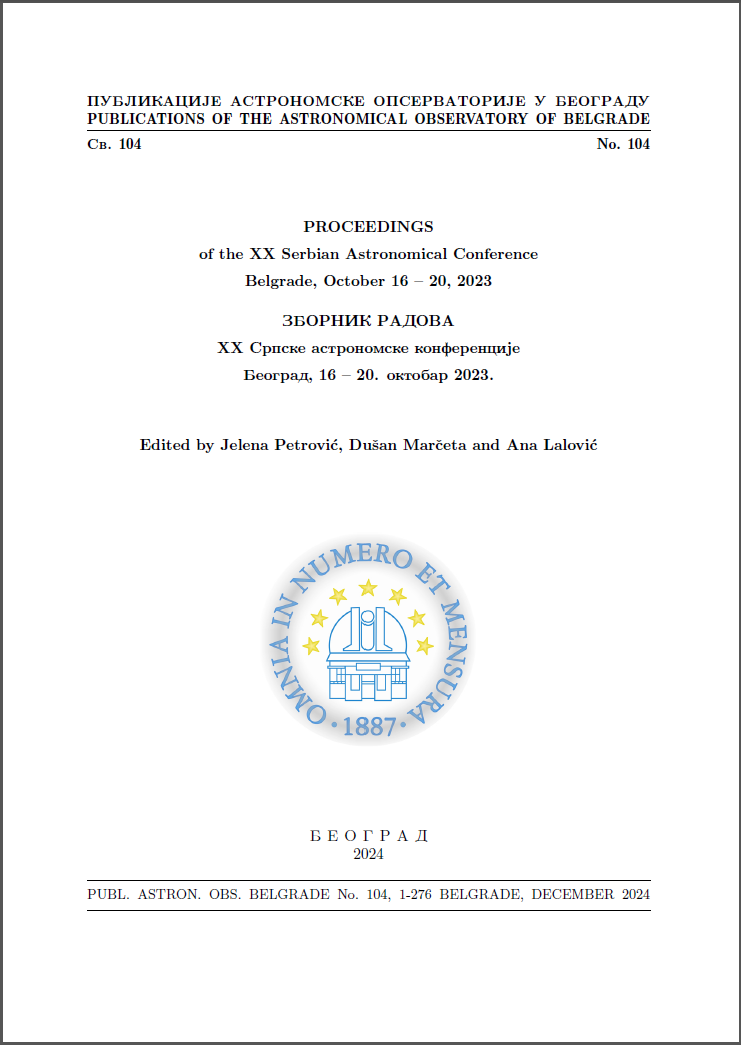WHY DO DIFFERENT EARLY-TYPE-GALAXIES HAVE DIFFERENT AMOUNTS OF ROTATIONAL SUPPORT?
Michal Bílek, Pierre-Alain Duc, E. Sola.
Publication
PUBLICATIONS OF THE ASTRONOMICAL OBSERVATORY OF BELGRADE104, Page 49-57, https://doi.org/10.69646/aob104p049
PROCEEDINGS of the XX Serbian Astronomical Conference, Belgrade, October 16 - 20, 2023, Edited by Jelena Petrović, Dušan Marčeta and Ana Lalović
Published by: Astronomical Observatory, Volgina 7, 11060 Belgrade 38, Serbia
Published: 15. 12. 2024.
Abstract
Abstract. Early-type galaxies (ETGs, i.e. elliptical and lenticular galaxies) differ in their amount of rotational support – some are purely supported by velocity dispersion, while oth- ers show pronounced ordered rotation. Cosmological hydrodynamical simulations show that the progenitors of all ETGs were first rotating quickly, but then mergers decreased their rotational support. In the presented work, we studied this process using an observational archaeological approach. Namely, we inspected the correlations of 23 merger-sensitive char- acteristics of local ETGs with a parameter quantifying the rotational support. We used a volume-limited sample of local ETGs, that are not in galaxy clusters, from the MATLAS survey. We found, for example, that slowly rotating galaxies have tidal features and kinemat- ically distinct components more often and have lower metallicities. We sought for mutual interpretation of the correlations among all 23 quantities, together with literature results on high-redshift massive galaxies. There seems to be only one interpretation possible: on average, ETGs lose their rotational support through multiple minor wet mergers happening at the redshifts above about two.




